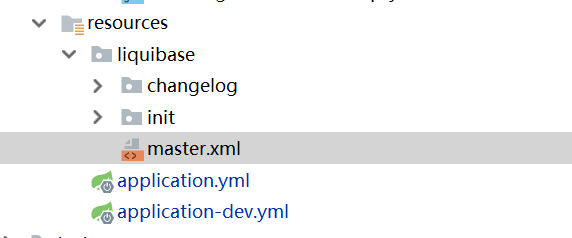从0手写springCloud项目(二 框架代码详解)
写在前面
前面一篇将springCloud所需的几个组件搭建起来了,接下来以user模块为例子主要记录一下项目中集成的技术,框架,和使用方式。我想从以下几个地方总结:
- mybatis-plus3
- lcn5.0.2
- liquibase
- oauth2
- others(es,rabbitmq,全局异常处理,feign之间异常处理,logback,mysql,redis)
集成mybatis-plus3
可能有些同学常用的持久层框架是jpa,但是就我实践而言,mybatisplus好用的不是一丁点,个人建议用mybatisplus...现在plus3的版本支持的还是蛮多的:乐观锁,版本号,代码生成器,分页插件,热加载,通用枚举,自动填充,动态数据源....详见官网( https://mp.baomidou.com ),而且3.0集成也比2.x简单了不少,最简单的只需要加一个pom坐标即可,但是如果需要个性化配置,我们还是要写config,当然也不麻烦,很简单的。
pom
<!--mybatis-plus-->
<dependency>
<groupId>com.baomidou</groupId>
<artifactId>mybatis-plus-boot-starter</artifactId>
<version>3.1.0</version>
</dependency>
yml
//可以看到我的各个文件存放的路径分别在哪里
mybatis:
type-aliases-package: cn.iamcrawler.crawler_common.domain.goddess
mapper-locations: cn/iamcrawler/crawlergoddess/mapper/*Mapper.xml
type-handlers-package: cn.iamcrawler.crawlergoddess.mapper.typehandler
global-config:
refresh-mapper: true
那么接下来继承plus的两个方法就可以了
/**
* Created by liuliang on 2019/3/21.
*/
public interface DataUserMapper extends BaseMapper<DataUser> {
}
@Service
@Slf4j
public class DataUserService extends ServiceImpl<DataUserMapper,DataUser>{
}
ps:大家可以想一想,spring的controller,service,mapper需要使用注解将其标识为bean才能扫描得到,而这里的mapper却没有添加@Repository注解,这是因为我在注解类上加了一个注解,指定spring启动的时候扫描到这个包下,所以这里就可以不用添加@Repository注解,也可以被spring扫描到啦。主类的注解如下:
@SpringBootApplication
@EnableEurekaClient
@EnableFeignClients
@EnableTransactionManagerServer
@MapperScan("cn.iamcrawler.crawlergoddess.mapper")//上面说的,就是这个注解!
public class CrawlerGoddessApplication {
public static void main(String[] args) {
SpringApplication.run(CrawlerGoddessApplication.class, args);
}
}
是的,就是这么简单。plus最简单的集成就完成了,接下来继承mapper接口,service接口就可以写sql了。具体详见mybatis-plus官网。
ps:最后还有一个小知识点,其实大家可以看到,我的xml是放在和mapper一起的(默认是放在resource下面,打包成jar的时候路径就是我们常说的classpath),而我们知道,在maven打包jar的时候,是不会扫描这个java下的.xml文件的,为什么我打包jar也可以扫描呢?是因为我在maven里面配置了一个将java下的xml也打包的程序,如下:
<build>
<finalName>crawler-goddess</finalName>
<plugins>
<plugin>
<groupId>org.springframework.boot</groupId>
<artifactId>spring-boot-maven-plugin</artifactId>
</plugin>
</plugins>
<!---我上面说的就是下面这个配置哦-->
<resources>
<resource>
<directory>src/main/java</directory>
<includes>
<include>**/*.xml</include>
</includes>
</resource>
<resource>
<directory>src/main/resources</directory>
</resource>
</resources>
</build>
集成lcn5.0.2
微服务集成分布式事务框架已经不是一个新鲜的事情,在这方面,我前面也写过好几个文章介绍过,其中有springboot1.5.9+lcn4.1.0( https://segmentfault.com/a/11... ), 有springboot2.1.3+lcn5.0.2( https://segmentfault.com/a/11... )。大家可以按需阅读并配置,当然这里我这个demo配置的是5.0.2版本.毕竟这个版本比4.1.0强大了不少,并且配置也更加方便。具体大家也可以参照lcn官网,描述的非常详细( http://www.txlcn.org )
集成liquibase
不知道大家是否经历过没有用程序代码管理sql语句的项目,我最开始经历过一次。每次上线前,组长会问我们有没有什么sql需要执行的,上线前执行还是上线后执行,他那边统计好,然后在生产数据库执行。这样是很麻烦的,每次都要人工统计,人工执行,如果sql没有问题还好,若是有问题,是加长了都不知道是谁写的这句sql,问题很难追根溯源。并且每次更换系统环境,都是直接要把表结构DDL一份出来...真的是很low啊有没有....
而liquibase是一个开源的数据跟踪,管理工具,它可以做我们上面说的所有事情,并且还很强大。接下来看一下在springboot2.1.3是怎么用的吧(boot版本不同,集成方式略有差异,大家注意一下)
pom
<!--liquibase依赖-->
<dependency>
<groupId>org.liquibase</groupId>
<artifactId>liquibase-core</artifactId>
</dependency>
yml
spring:
application:
name: crawler-goddess
liquibase:
change-log: classpath:liquibase/master.xml #标识liquibase的入口
上面也讲到,classpath其实就是打包后的resource目录,所以这个入口在resource.liquibase下的一个叫master.xml文件里面(当然大家可以自定义路径)

看一下这个master.xml里的信息:
<?xml version="1.0" encoding="utf-8"?>
<databaseChangeLog
xmlns:xsi="http://www.w3.org/2001/XMLSchema-instance"
xmlns="http://www.liquibase.org/xml/ns/dbchangelog"
xsi:schemaLocation="http://www.liquibase.org/xml/ns/dbchangelog http://www.liquibase.org/xml/ns/dbchangelog/dbchangelog-3.4.xsd">
<!--我这里之配置了一个路径-->
<include file="classpath:liquibase/changelog/release20180919.xml" relativeToChangelogFile="false"/>
</databaseChangeLog>
可以看到配置里面是读的liquibase/changelog/release20180919.xml这个文件
release20180919.xml
<?xml version="1.0" encoding="utf-8"?>
<databaseChangeLog
xmlns:xsi="http://www.w3.org/2001/XMLSchema-instance"
xmlns="http://www.liquibase.org/xml/ns/dbchangelog"
xsi:schemaLocation="http://www.liquibase.org/xml/ns/dbchangelog
http://www.liquibase.org/xml/ns/dbchangelog/dbchangelog-3.4.xsd">
<property name="now" value="now()" dbms="mysql,h2"/>
<property name="autoIncrement" value="true" dbms="mysql,h2,postgresql,oracle"/>
<!--这里又可以引入其他文件的sql-->
<changeSet id="201811010924001" author="liang.liu">
<sqlFile path="classpath:liquibase/init/init_table.sql" encoding="UTF-8"/>
<sqlFile path="classpath:liquibase/init/add_user.sql" encoding="UTF-8"/>
</changeSet>
<!--也可以自己创建表,删除表,创建索引,删除索引...-->
<changeSet id="201906180001" author="liang.liu">
<createTable tableName="test_table">
<column name="id" type="varchar(20)" remarks="id">
<constraints primaryKey="true"/>
</column>
</createTable>
</changeSet>
</databaseChangeLog>
当然,更多的用法和配置大家也可以参照官网使用( http://www.liquibase.org/ )
- 本文标签: client https JPA UI MQ 分布式事务 微服务 classpath final DDL 数据库 Service 管理 springboot 插件 pom build 文章 配置 IO DOM 索引 java 锁 统计 Oracle Action NSA 分布式 value maven schema ACE map plugin App Feign spring 分页 core tar Property redis id key 2019 db 开源 删除 sql mapper CTO springcloud 目录 mybatis src 代码生成器 数据 Master XML Logback tab 总结 http cat bean 代码 rabbitmq mysql Eureka
- 版权声明: 本文为互联网转载文章,出处已在文章中说明(部分除外)。如果侵权,请联系本站长删除,谢谢。
- 本文海报: 生成海报一 生成海报二











![[HBLOG]公众号](https://www.liuhaihua.cn/img/qrcode_gzh.jpg)

